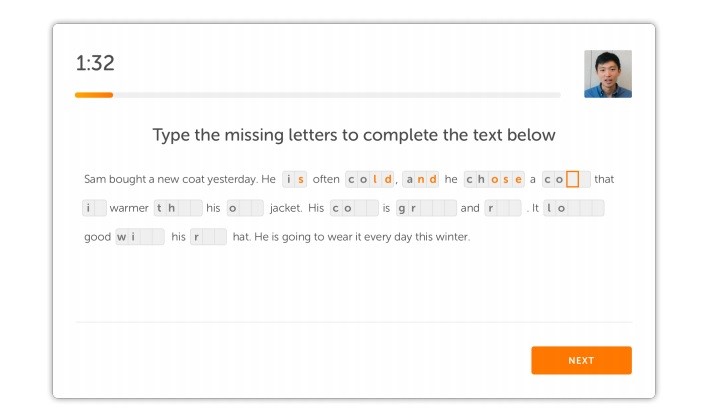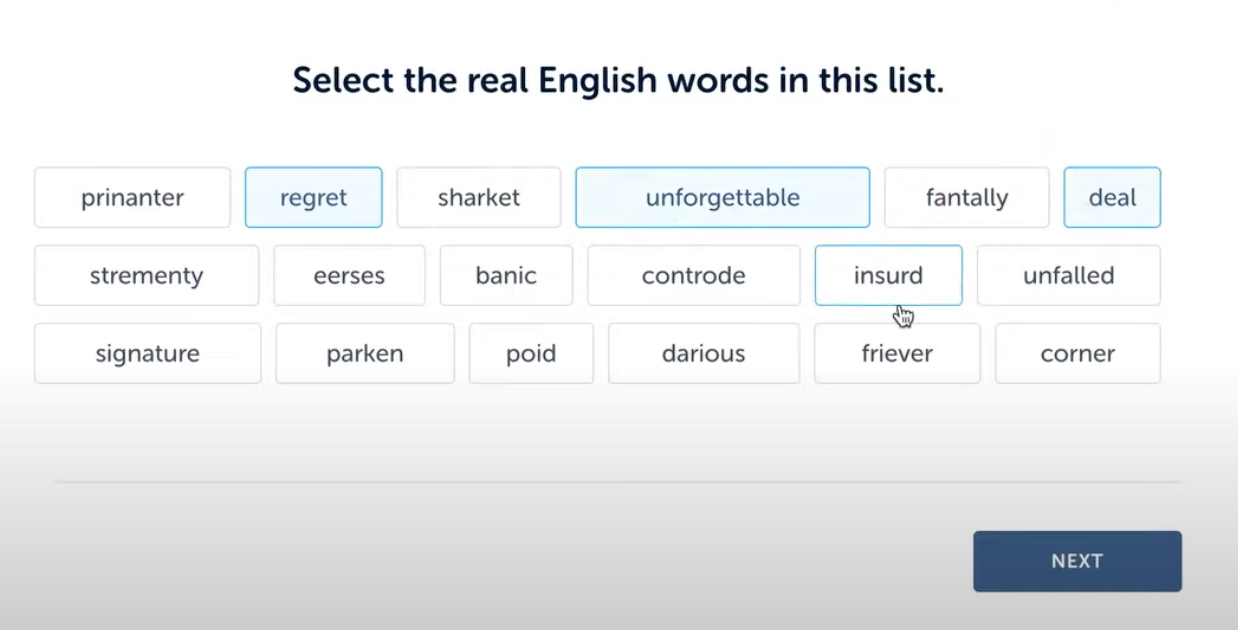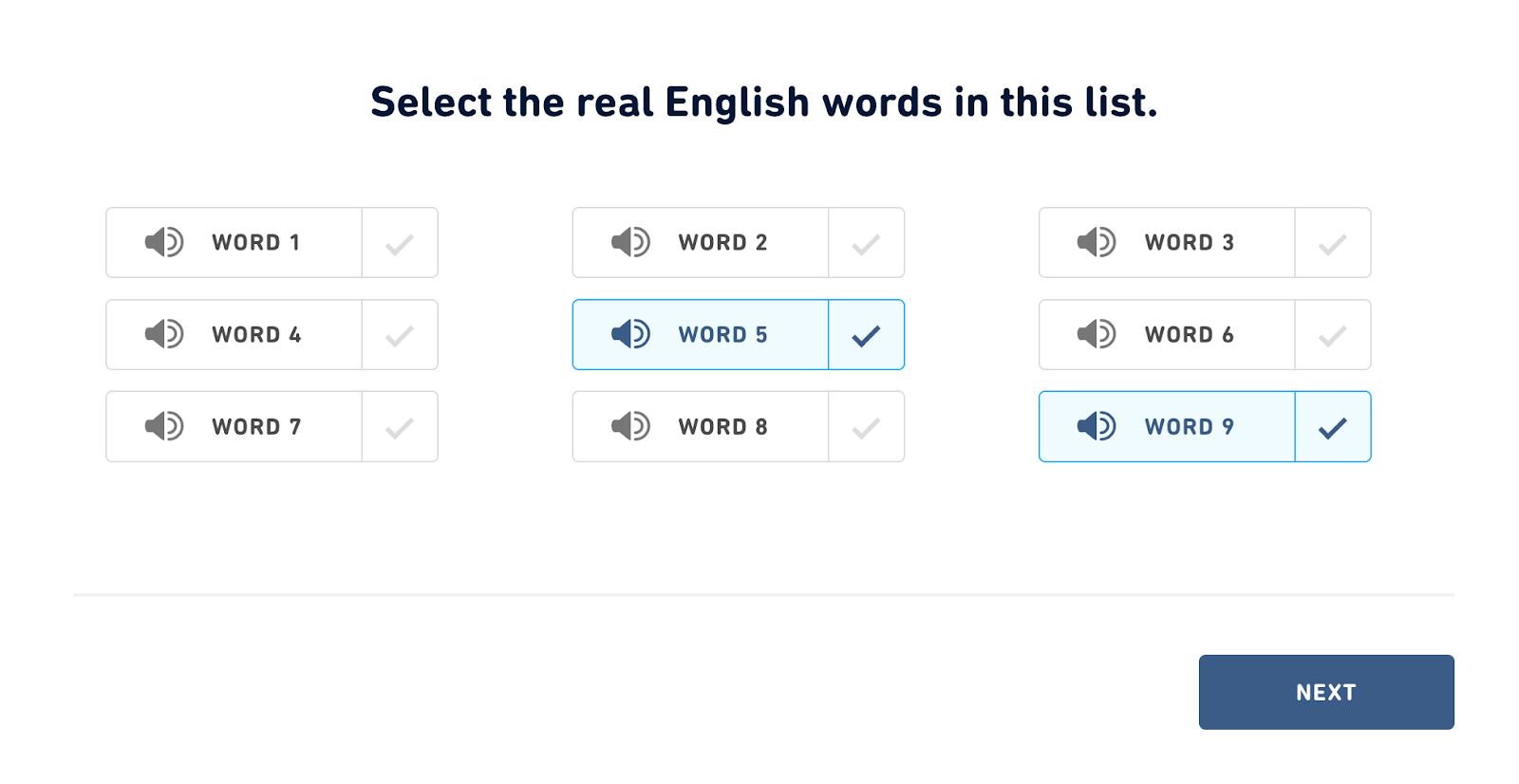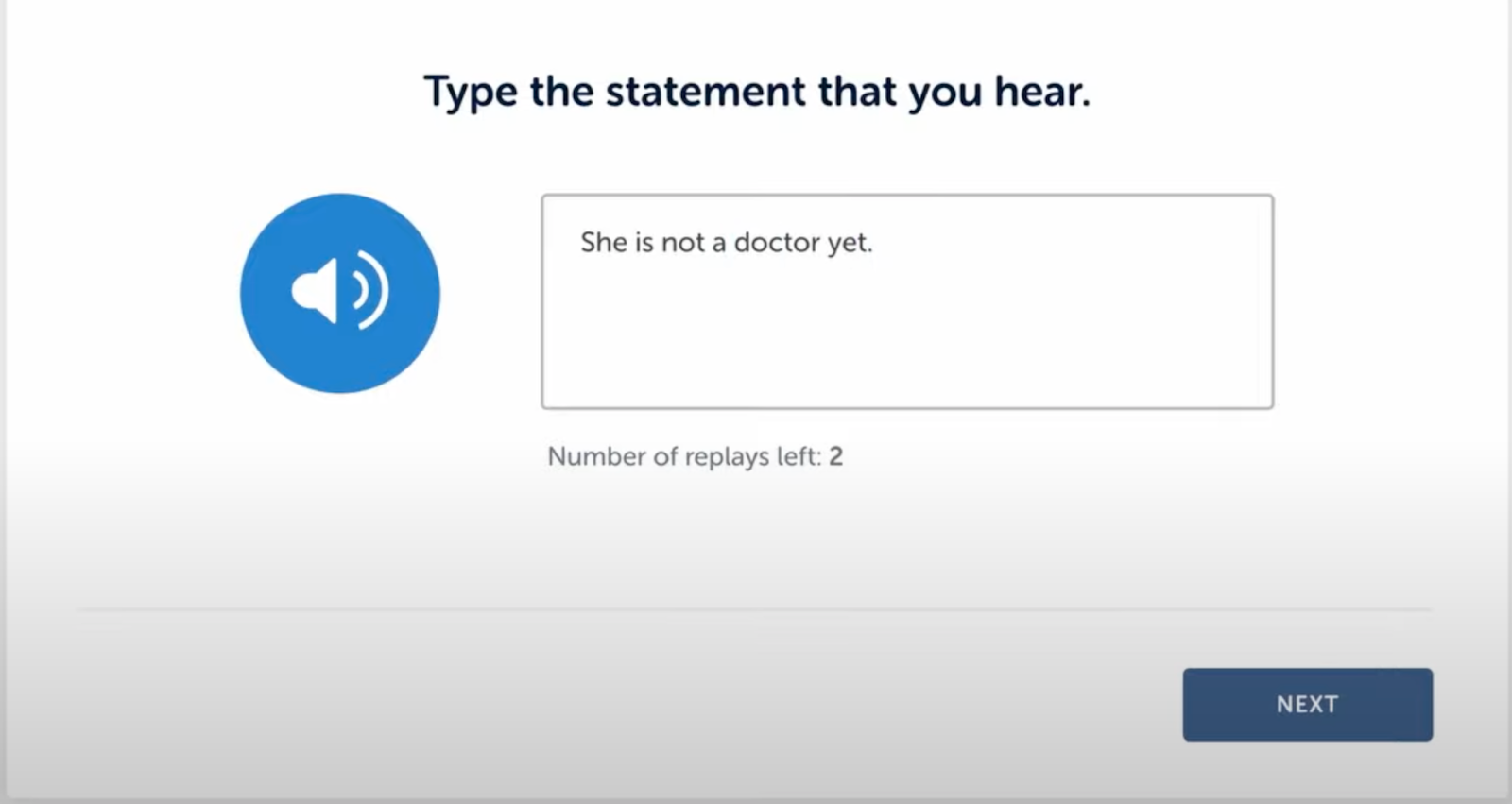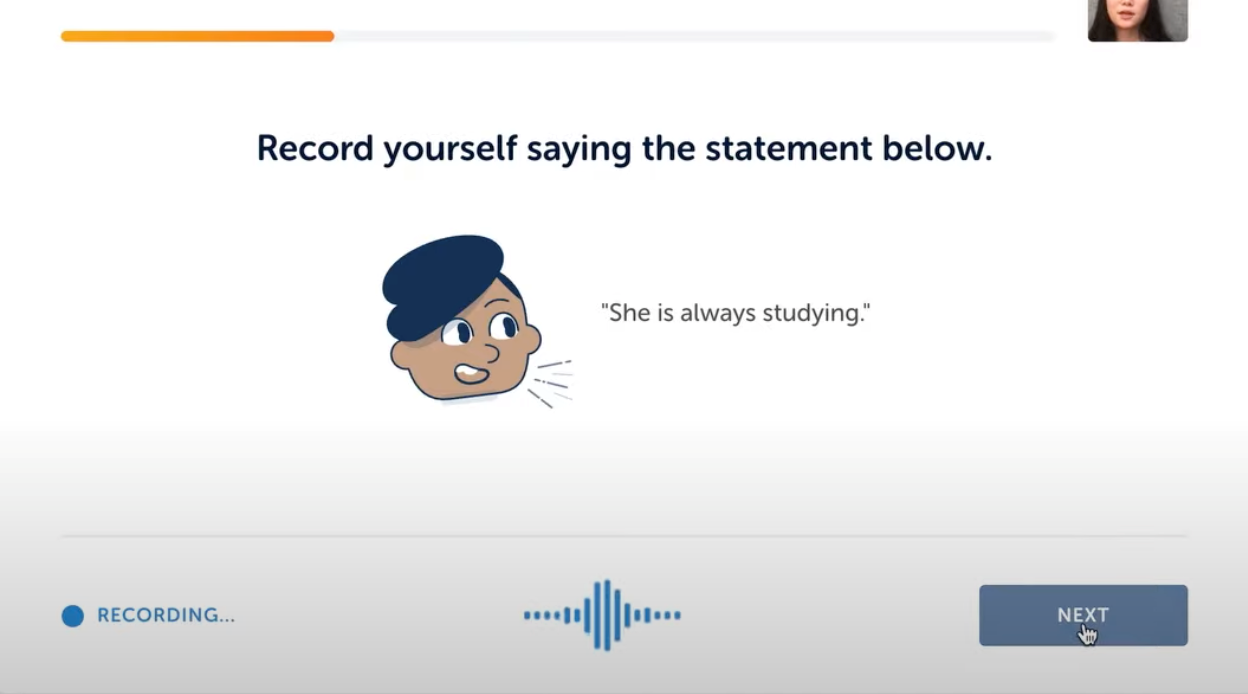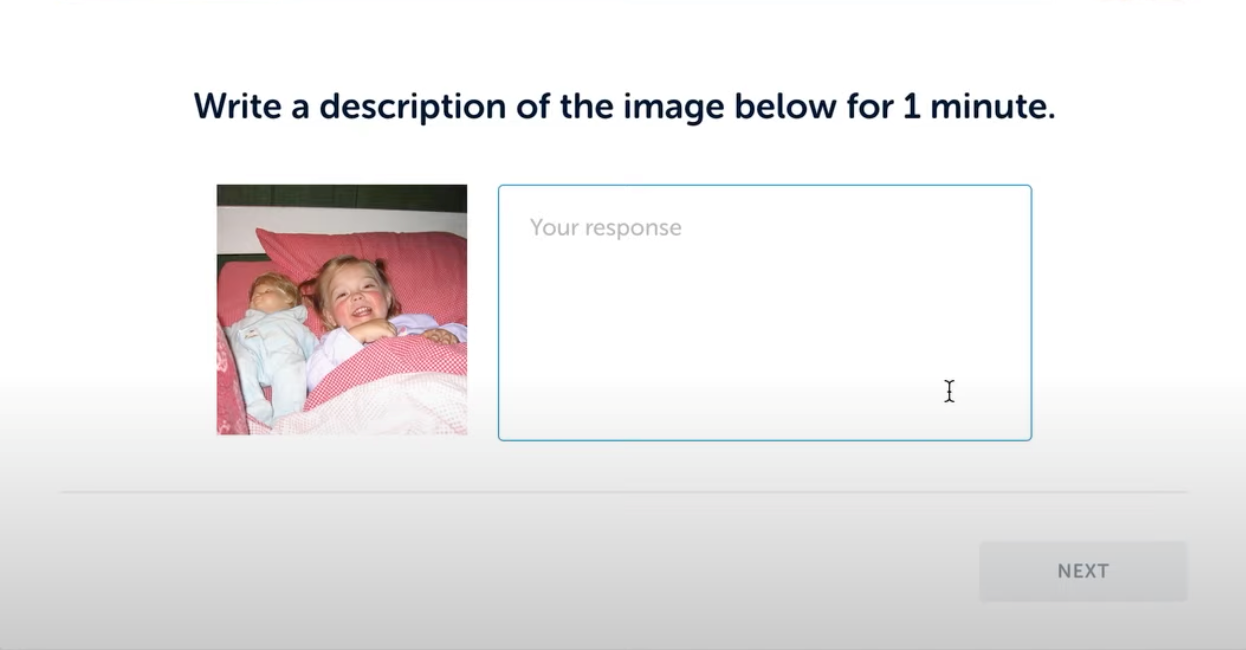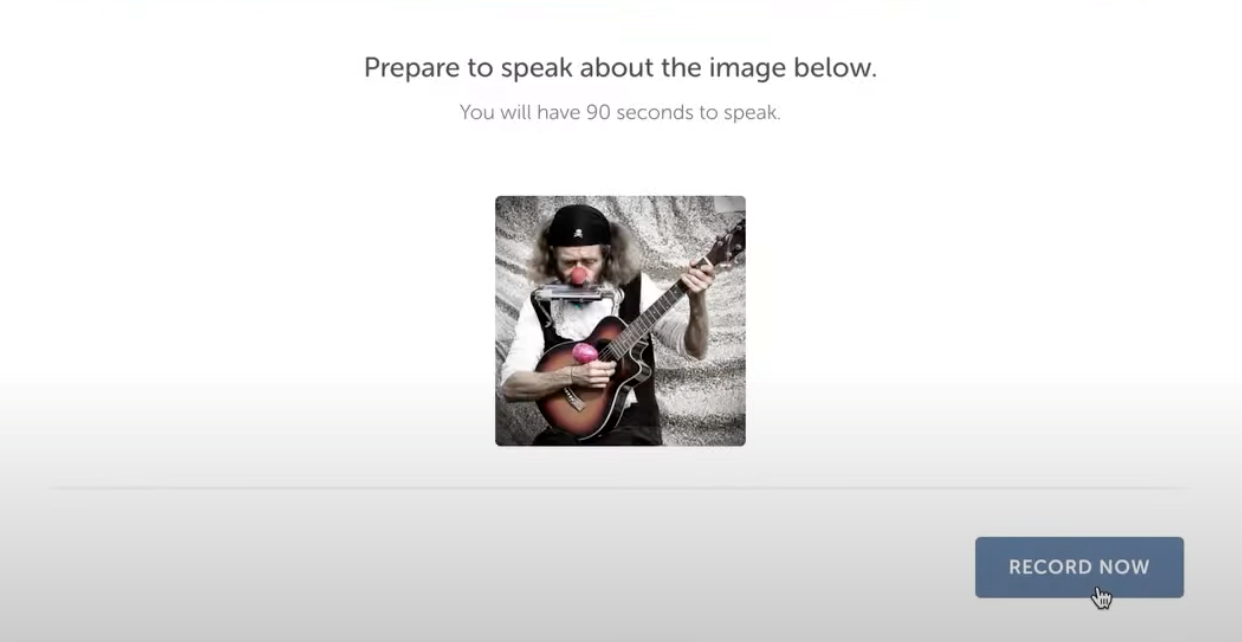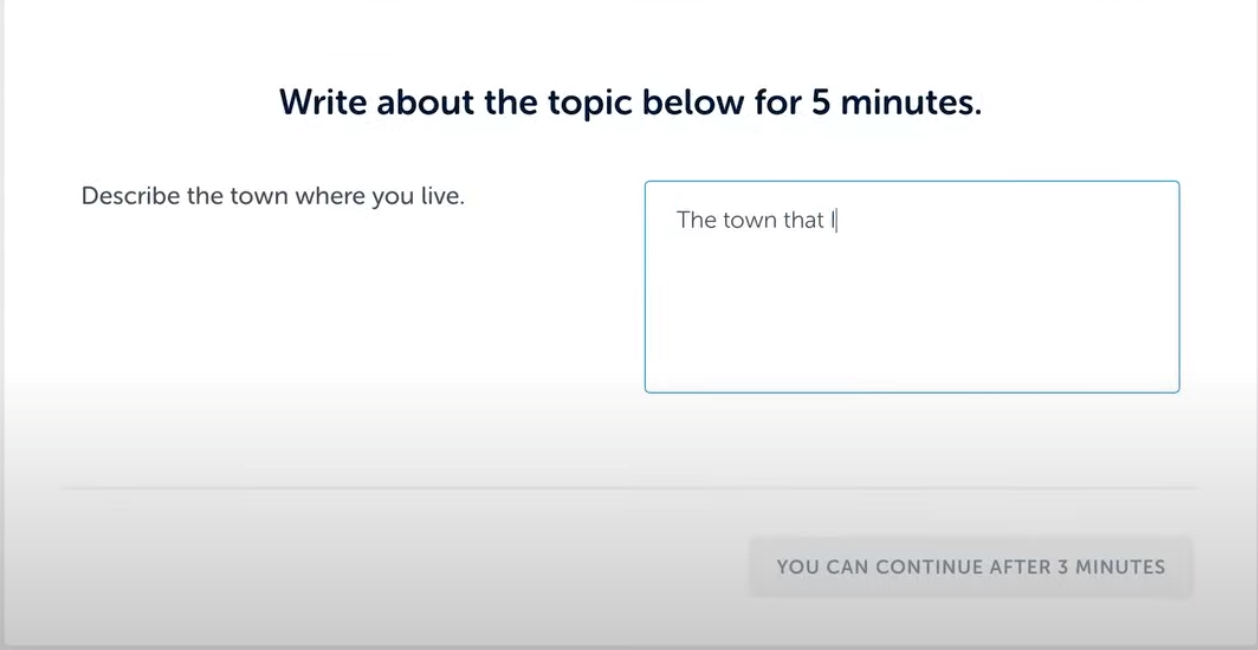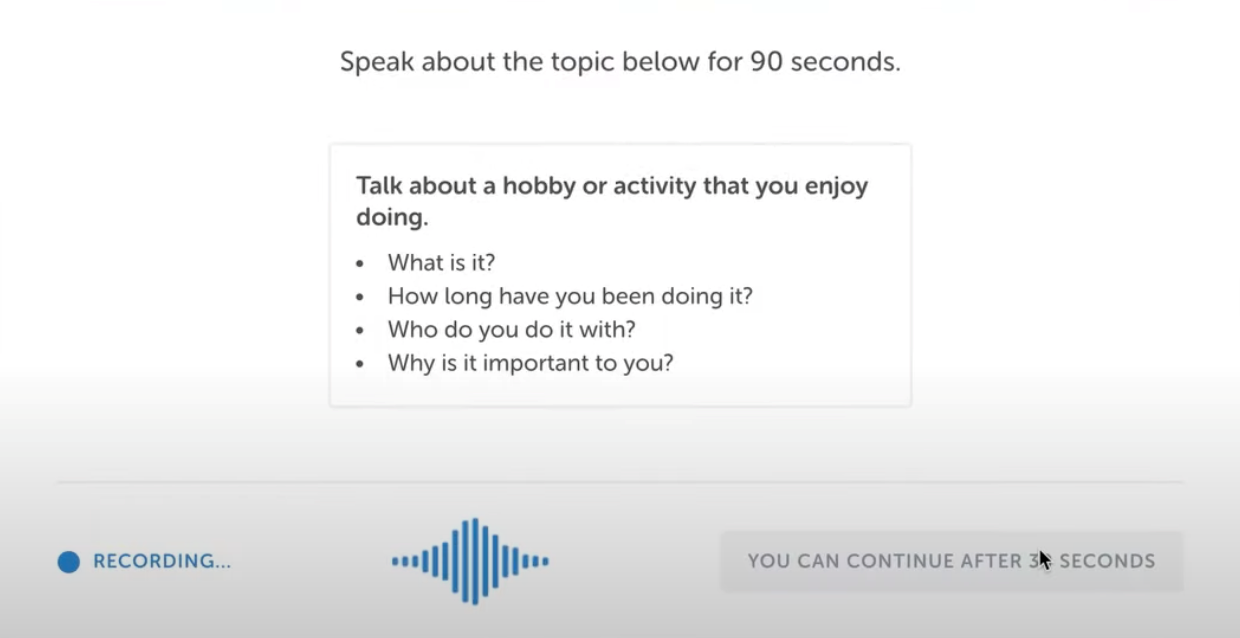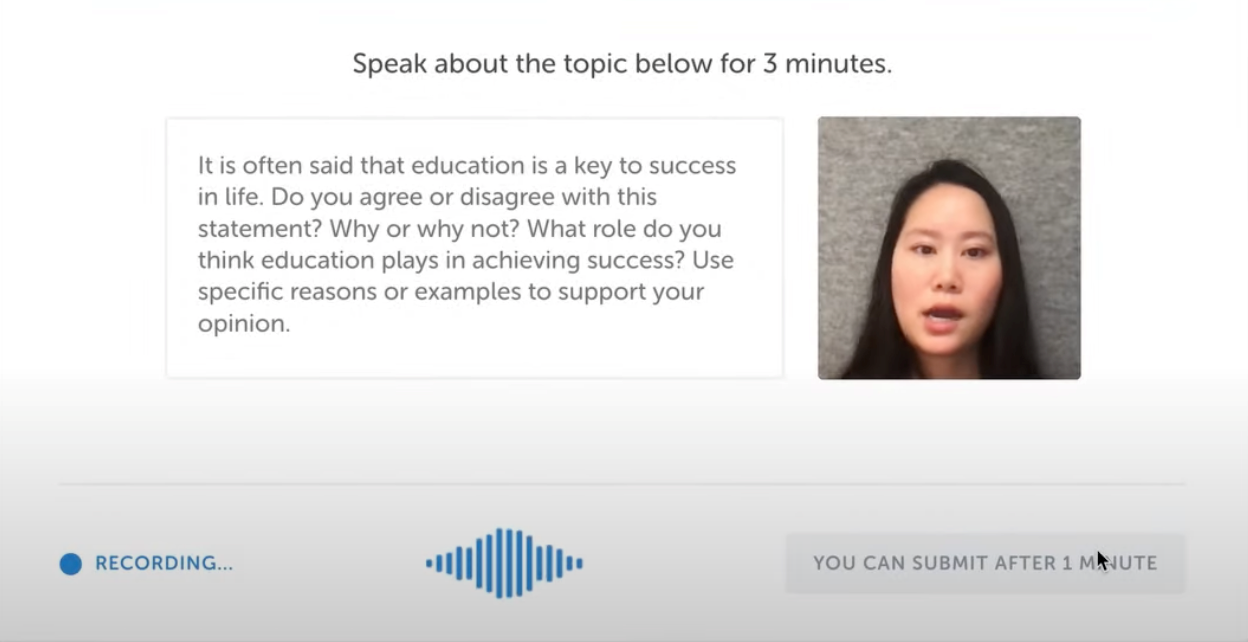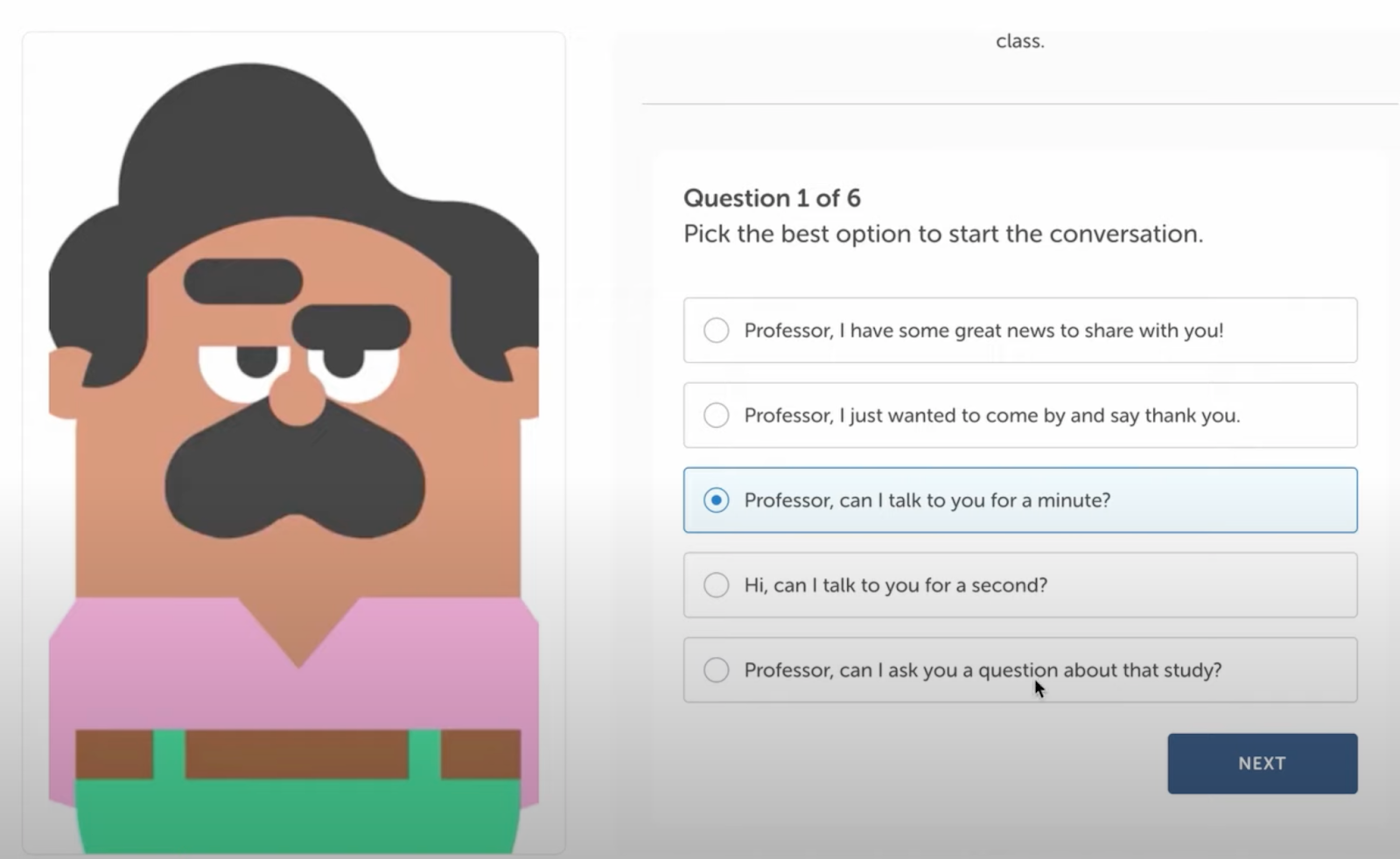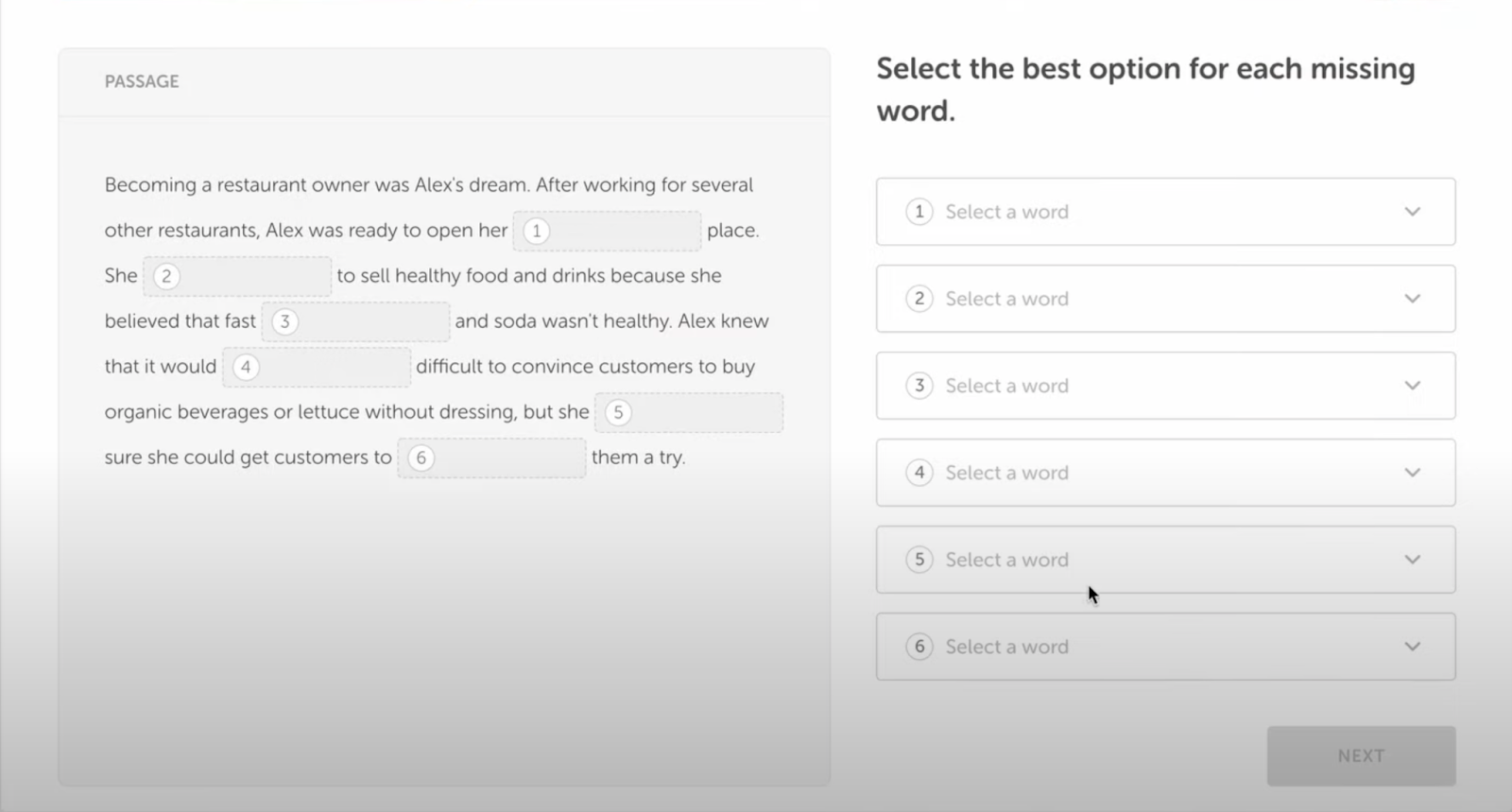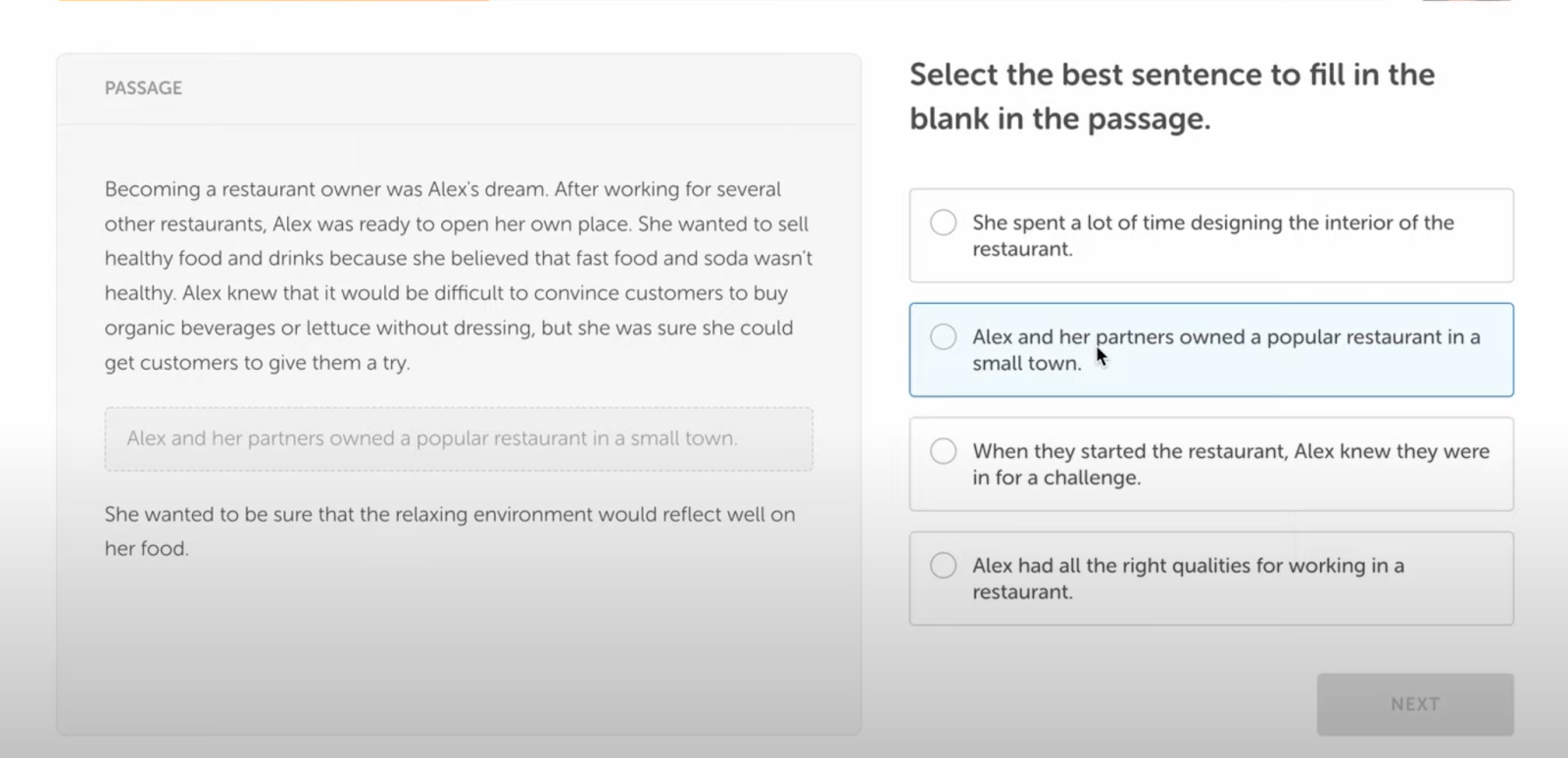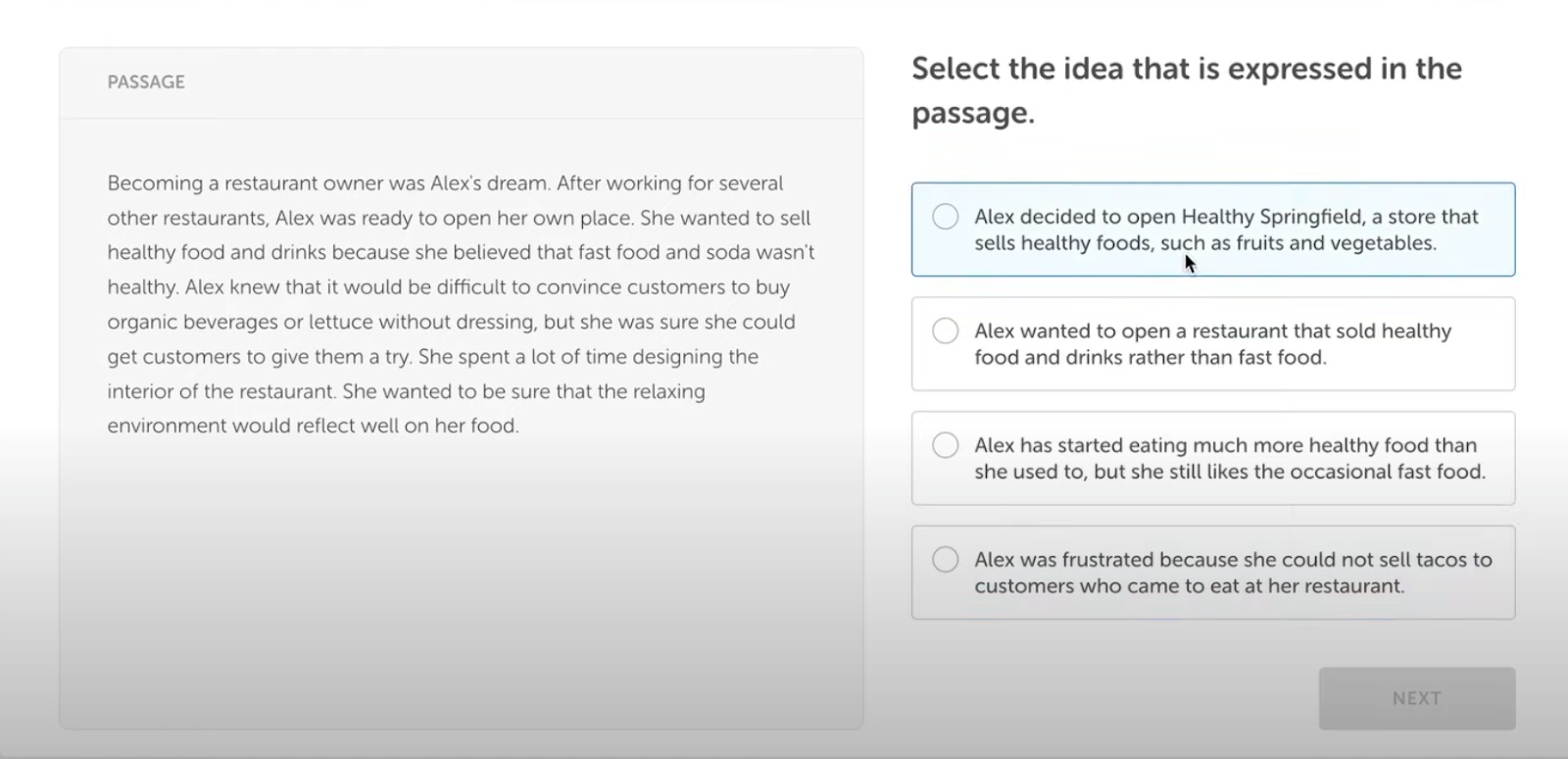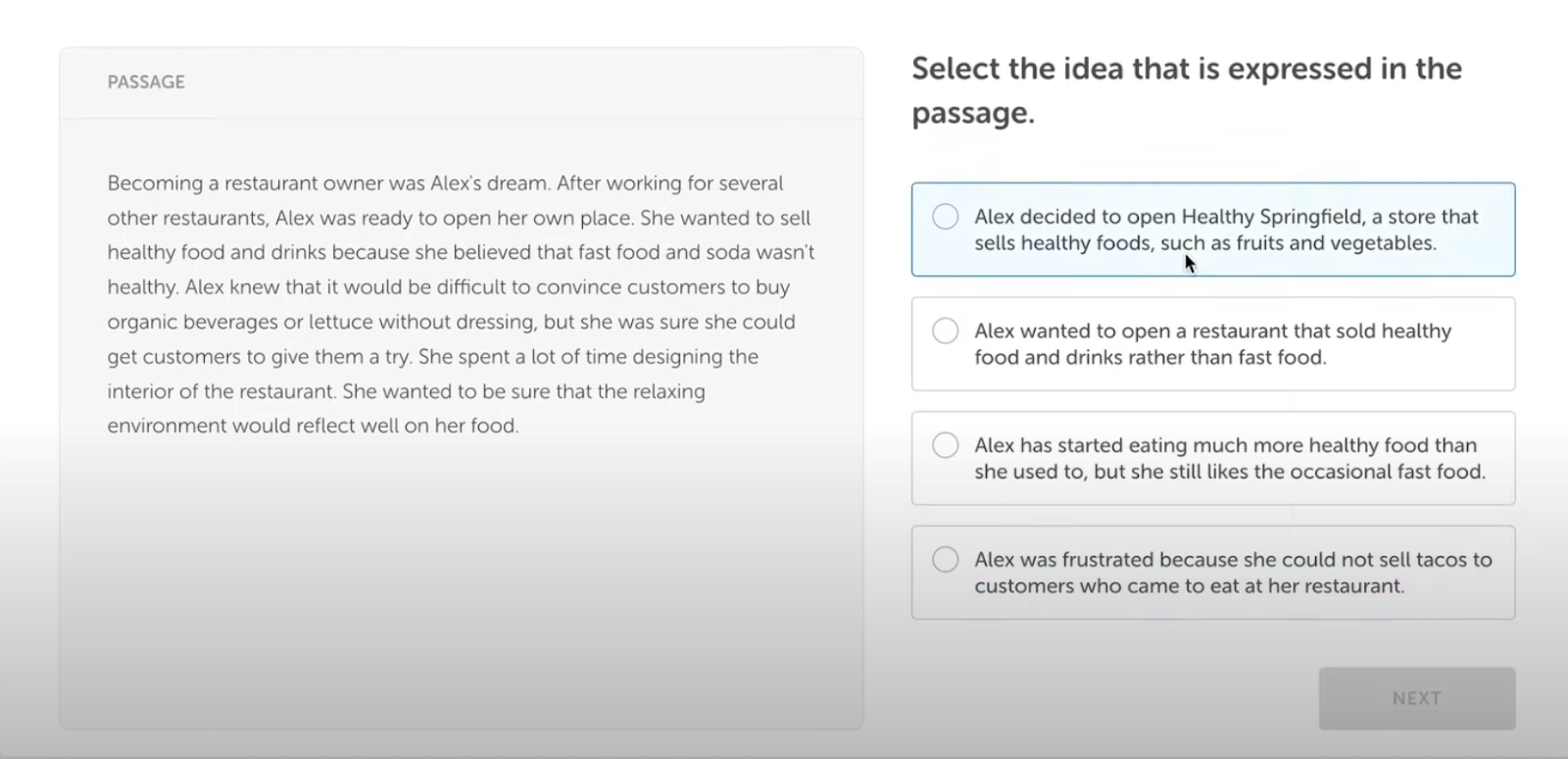The Duolingo English Test is divided into three sections: Introduction, Adaptive test (Graded), Writing and speaking sample (Ungraded) and the total time of the test is 60 minutes. Understand what each section asks of you by reading on.
Section 1: DET Introduction and Onboarding
This first section informs applicants of the guidelines and prerequisites for the Duolingo English Test. It lasts for five minutes. In this section, the candidate is debriefed and reminded to ensure the following:
- The microphone, speakers, and camera on your computer are operating correctly.
- Send in your picture ID from the government.
- Review the requirements and rules for the test.
Section 2: Adaptive Test
The 45-minute Duolingo Adaptive test evaluates a candidate's English language proficiency using various kinds of unusual question formats. The exam questions are given at random, and depending on how well you do, the questions' complexity will continue to change. This section will not have a set number of questions, and the test will end as soon as the grading system is happy with your performance.
The questions that will be asked in the adaptive test are included in the table below, along with the domains they measure and the time allotted to respond.
|
Questions Type
|
Subscores
|
Time limit
|
|
Read and complete
|
Literacy, Comprehension
|
3 min
|
|
Read and select
|
Literacy, Comprehension
|
1 min
|
|
Listen and select
|
Comprehension, Conversation
|
1.5 min
|
|
Listen and types
|
Comprehension, Conversation
|
1 min
|
|
Read aloud
|
Comprehension, Conversation
|
20 sec
|
|
Write about photo
|
Production, Literacy
|
1 min
|
|
Speak about photo
|
Production, Conversation
|
1 - 1.5 min
|
|
Read and write
|
Conversation, Production
|
0.5 - 1.5 min
|
|
Listen and speak
|
Conversation, Production
|
0.5 - 1.5 min
|
Section 3: Video Interview, Writing, and Speaking Test
The last section of the Duolingo English Test is a ten-minute video interview. Along with the test taker's score, open-ended prompts and writing and speaking samples are shared with the testing institutions. You must have a front-facing camera, a microphone, functional speakers, and a dependable internet connection, as requested by Duolingo. In this section, a candidate needs to do the following:
- Describe an image.
- Deliver their ideas on a topic for a few minutes.
How to book your slot or register for the DET? Find out in the next section.






